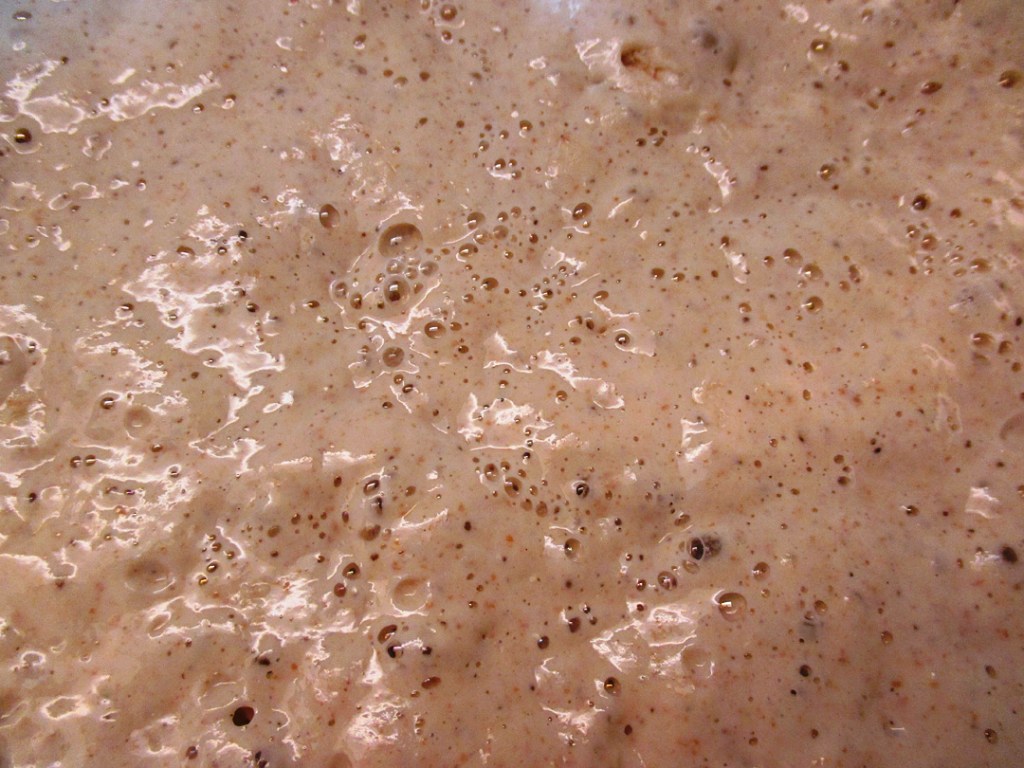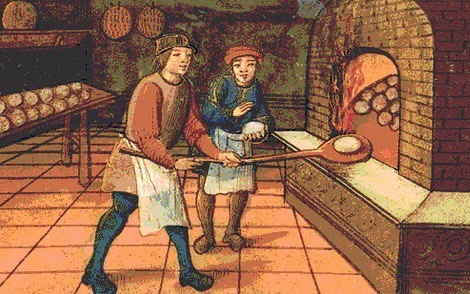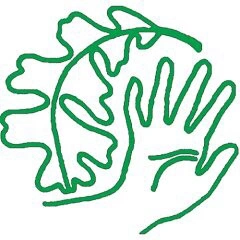Wild Bread: Handbaked sourdough artisan breads in your own kitchen, Second Edition, © 2023 Lisa Rayner, Lisa Rayner Books. The new edition has 36 new pages with 110 color photographs and new text. Print and Kindle editions on Amazon. PDF eBook format at Lisa Rayner Handwovens on Etsy.






Wild Bread: Handbaked sourdough artisan breads in your own kitchen
© 2023 Lisa Rayner, Lisa Rayner Books, $9.99/$16.95 USD
Second Edition ISBN 979-8-9879697-1-7
Wild Bread is much more than just another bread cookbook. This book explores what goes on inside dough as it is transformed from water, flour, wild yeast and probiotic bacteria into the kind of bread that makes your mouth water.
Wild Bread is one of the most highly rated sourdough bread books published in the last 15 years according to reviewers on Amazon of the first edition, published in 2009.
Have you ever wanted to bake San Francisco sourdough, crusty French artisan loaves, dense Russian ryes, Italian ciabatta, Indian naan, pita bread, great homemade pizza crusts, soft whole wheat sandwich bread, bagels, sweet doughs, gluten free Ethiopian injera crêpes and Indian dosa, and much more?
You may never be satisfied with ordinary bread again. Once you learn what factors affect aroma, flavor, shape, crust and crumb, you too will be transformed — into an artisan. Wild Bread encourages your creativity and provides the basic principles you need to bake any bread you desire without needing a recipe. Wild bread also explores baking bread sustainably in solar cookers and wood-fired earth ovens.
Wild Bread teaches you how to make authentic whole grain sourdough artisan breads that are easy to knead by hand and make in the variable temperatures and humidities of a home kitchen.
- Part I explains the science and care of sourdough ecosystems, including how to capture your own sourdough culture and where to buy authentic cultures from around the world.
- Part II explains how to make bread, including how to mill your own wholegrain flours and bake artisan-style breads in a home oven.
- Part III contains instructions for making a variety of artisan loaves, flatbreads, pan breads, batter breads, sweet rolls and more—from wheat, rye and gluten-free whole grain flours.
- Part IV introduces you to the world of sustainable bread baking, with an exploration of energy-efficient solar cookers and wood-fired earth and brick ovens.
- Part V contains a variety of information to improve your bread baking, including commercial sources for authentic sourdough culture, bread troubleshooting tips, sources for sustainably-produced grains and flours, and books and videos on sourdough and artisan bread baking.

Excerpt from Wild Bread:
What is sourdough?
Sourdough starters are referred to as “cultures.” Sourdough cultures are complex ecosystems composed of multiple species of yeast and lactic acid-producing bacteria. No baker’s yeast or chemical leaveners like baking soda are ever added to real sourdough breads.
Wild sourdough yeasts don’t live alone in a monoculture, like baker’s yeast. Dormant cells of bacteria and fungi float through the air all around us and live in flour. When they land on a suitable material, they begin to reproduce. Their digestive process is known as fermentation. These microorganisms live together in a mutually-beneficial symbiotic partnership like plants and animals do in larger ecosystems. The yeast and bacteria share the available nutrients rather than compete for them and cooperatively protect their ecosystem from harmful invaders.



Yeast are tiny, one-celled fungi. Sourdough yeast is more tolerant of varying environmental conditions such as temperature and acidity than baker’s yeast. When yeast have access to oxygen, aerobic fermentation produces carbon dioxide gas (CO₂), which bubbles through bread dough, making it rise. Yeast fermentation in the absence of oxygen (anaerobic fermentation) produces alcohol. A sourdough culture that has been left to ferment for a long time without being aerated will develop a thin layer of alcohol (hooch) on the surface. The alcohol provides an additional flavor dimension.
Another flavorful byproduct of yeast metabolism is the amino acid glutamate. Glutamate produces a rich, savory flavor called umami (oo-MA-mee in Japanese). Umami is now known to be the fifth taste perceived by the human tongue, along with sweet, salty, sour and bitter tastes. Umami flavors are also found in other fermented foods such as miso and aged cheeses, as well as some vegetables, such as tomatoes and mushrooms.
Sourdough bacteria are lactic acid-producing bacteria (lactobacilli) that are also found in numerous other fermented foods. These bacteria produce unique flavors and textures and increase the nutritional value of sourdough bread.
Sourdough bacteria eat carbohydrates, fats and proteins and produce acids, notably lactic acid and to a lesser extent acetic acid (vinegar). The pH of sourdough is roughly 4 to 4.5. Baker’s yeast dough, which is lacking in lactobacteria, has a less acidic pH of 5.5 to 6. Pathogenic microorganisms such as botulism bacteria, E. coli bacteria and spoilage fungi cannot reproduce in an environment with a pH below 4.6. Lactic acid bacteria produce other antibiotics to protect their ecosystems, too. Thus, the bacteria prevent pathogenic microbes from invading the sourdough ecosystem and upsetting the ecological balance. Furthermore, these natural preservatives keep sourdough bread mold-free much longer than bread made with baker’s yeast.
Real sourdough flavor comes primarily from these acids. The lactobacilli need a minimum of 12 hours to ferment in order to produce these wonderful flavors.
Sourdough breads are more nutritionally complete than those made with baker’s yeast. The acids produced by sourdough lactic acid bacteria and the long proofing times of sourdoughs confer a number of nutritional advantages over fast-rising breads made with baker’s yeast.
Healthy sourdough ecosystems are very resilient. Once you obtain a sourdough starter culture, whether you capture it yourself from the air or buy one from a reputable source, it will remain stable even if taken to a new location. Like heirloom seed varieties, heirloom sourdoughs can be passed down for many human generations.
It’s easy to obtain an authentic sourdough culture. You can:
- Capture wild yeasts and bacteria from the flour and air
- Buy a commercial fresh or dried sourdough culture
- Get some healthy starter from a friend
Is sourdough always sour?
No! Wild bread can taste mild, sour, or anywhere in between. It’s all a matter of taste. In Europe, the French use natural leavens to produce very mild artisan breads and sweet doughs, whereas the Germans and Austrians prefer strongly acidic rye breads.
Local strains of sourdough yeasts and bacteria differ from one another just as plant varieties differ from one another in different localities. Because of this natural diversity, regional sourdough breads are as distinct from one another as regional artisan cheese, miso, wine and other fermented foods and drinks. Each sourdough culture has a unique leavening time, degree of sourness and balance of additional flavors. Some strains of yeast ferment very quickly, giving less time for the bacteria to produce their acids and producing milder flavors. Other cultures, including the famous San Francisco sourdough culture, have long leavening cycles of up to 24 hours and produce very sour tasting bread. When choosing a sourdough culture, consider your family’s tastes, time constraints, and other needs (this is the subject of chapter 3).
“Your book is wonderful! I am so thankful to find a book that is more in line with our values than what is available on the mass market! Plus I would much rather support authors who are independently publishing or otherwise operating outside of the system.”
— Julie, Cultures for Health
“One of the Best! A MUST HAVE for every serious bread enthusiast! …To be perfectly honest, I did not have high expectations especially because I (like many others) have an inordinate fondness for full color splashy photographs, rich paper and enticing ad copy. The promise of simple binding, a few drawings and an unknown author didn’t seem promising. To my great surprise, this book QUICKLY went to the top of my “must keep” list. The reading is engaging, very enjoyable with a pleasant conversational style. The drawings—while not full color photographs—are equally interesting and truly add a great touch…but, the Real value of this book is the content and information contained. It’s absolutely packed full of relevant content about bread-making…without a doubt this book has more information than almost all the other books I bought including the highly ranked books by Peter Rheinhart and Richard Bertinet…in fact, this book contained nearly everything in both of those books COMBINED plus much more. …” (Five stars out of five)
— JavaJunki Top 100 Amazon Reviewer

Return to Lisa Rayner Books homepage.
© Lisa Rayner Books | Lisa Rayner Handwovens

